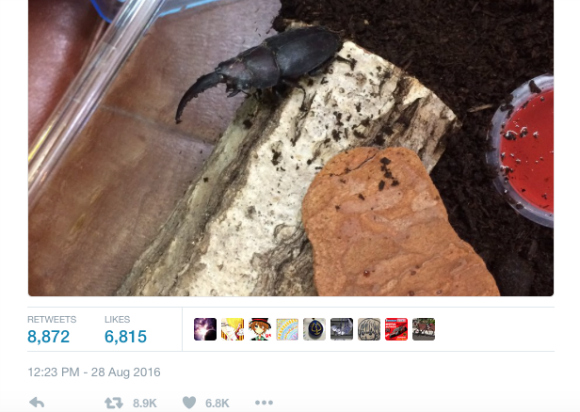
Sometimes fortune just happens to fall – er, crawl – right into your lap!
Usually gaining a nod from the academic community takes years of studying and hard work, but for one Twitter user’s family, all it took was her little brother’s interest in bugs and a good net.
▼ “So my little brother caught this half-male/half-female stag beetle… LOL”
While stag beetles in general are pretty common, and young children all across Japan go bug-catching every summer, finding a specimen like this in the insect world was akin to finding a five (not four)-leaf clover.
▼ “Upon doing a little research, I found out that the likely hood of finding one of these is 1 in every few ten or hundred thousand…”
Admittedly I’m not on up on all the details when it comes to differentiating beetle species, but luckily one commenter was able to provide a little more background info on these unique creatures from a book he had at home:
▼ “This is what one of my books had to say about it. ・`ω・) Just wow…”
Despite not having an internationally recognized English name for these beetles, they’re often referred to as “Rare Hermaphrodite Stag Beetles” among Japanese collectors. Unlike more common Hermaphrodite Stag beetles, the two present sexes are equally divided, with male organs on the male (left) side, and female organs on the female (right) side. Although rare to begin with, an even rarer version has the male side on the right and the female side on the left.
▼ “We finally heard back from an expert! Apparently this half-♂, half-♀ stag beetle is pretty rare, so a local Kagoshima magazine is going to run a story on it.”
“It’s even rarer than finding a Pokémon!”
“If it has that much scientific value, it shouldn’t be hard to sell it to a collector or organization for a good price…”
“You’d probably make a pretty penny off of it, yeah?”
“Better sell it quick before it dies! You’d rather be 500,000 yen (US$4,830) richer, right?”
Seeing as the last time one of these were found, it was put on display at a museum in Chiba Prefecture, we wouldn’t be surprised to see hardcore insect enthusiasts fighting for the chance to take it home.
Of course, right now, the family’s biggest concern is probably keeping this little creature alive.
Source: Twitter/@suwak1994912161 (1, 2, 3), Twitter/@dcop_Kohei_7 via Hachima Kikou, kerbtier.de
Feature/top image: Twitter/@suwak1994912161